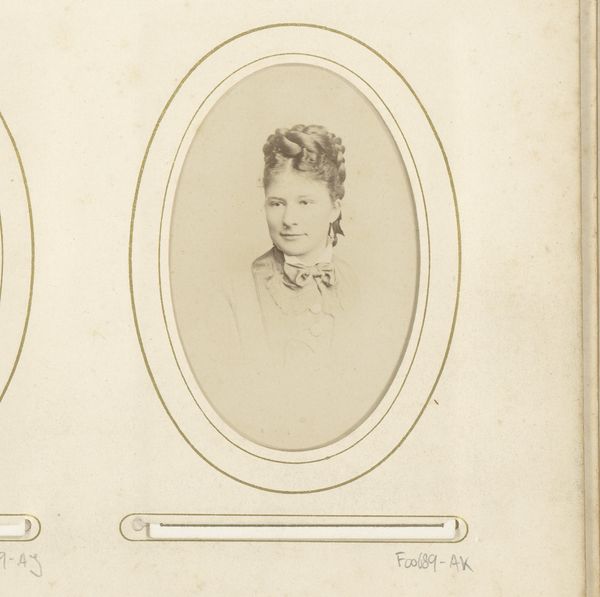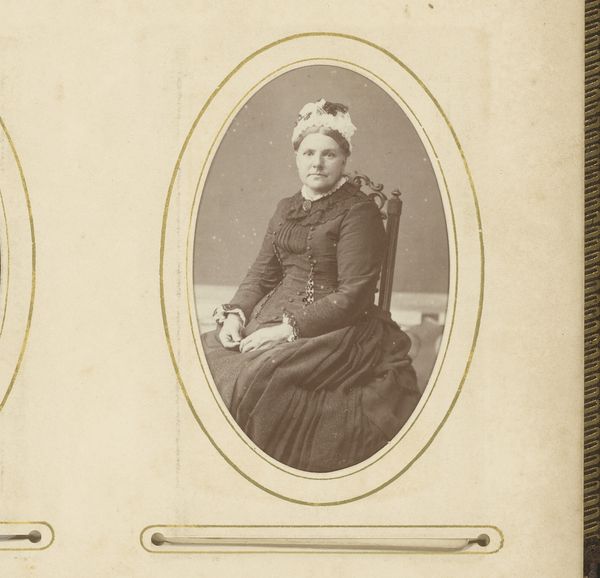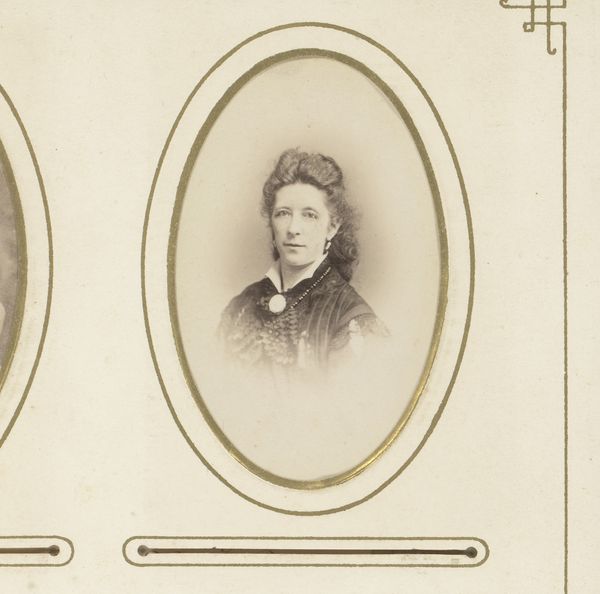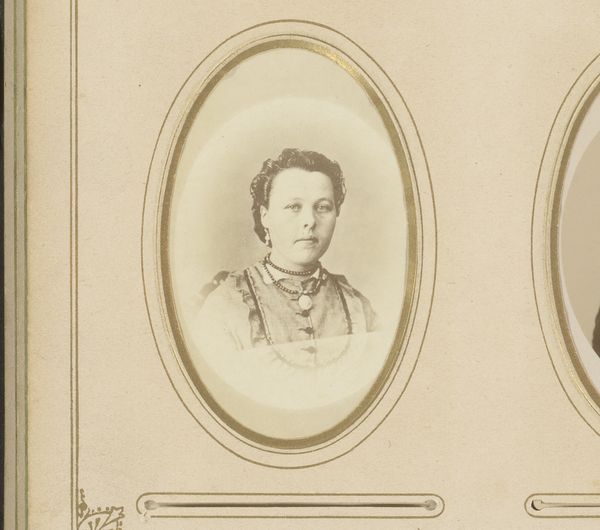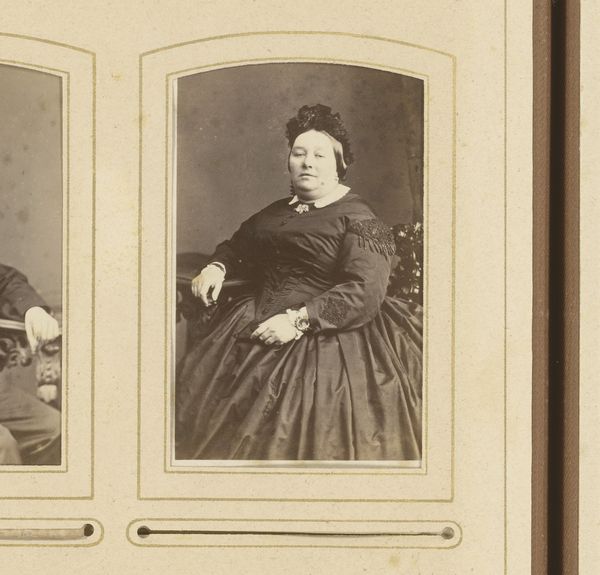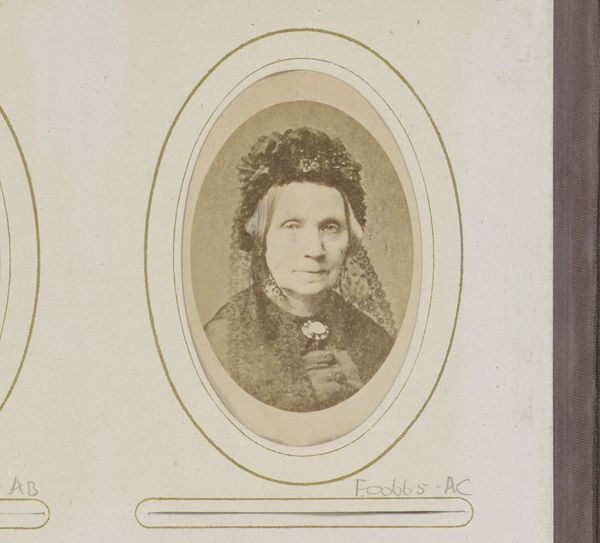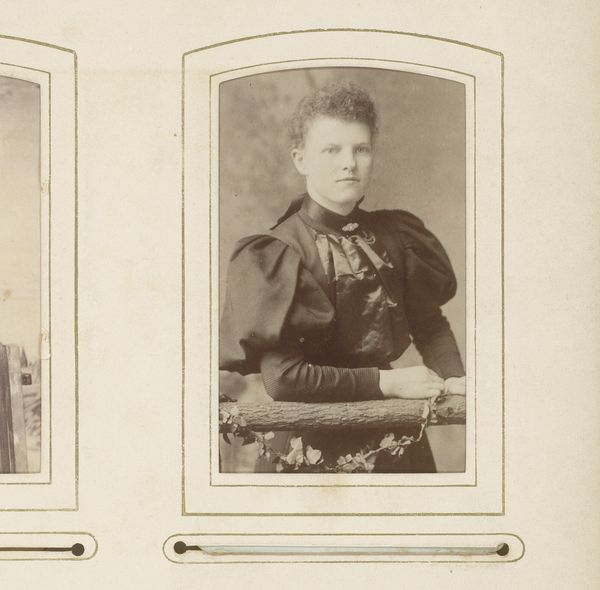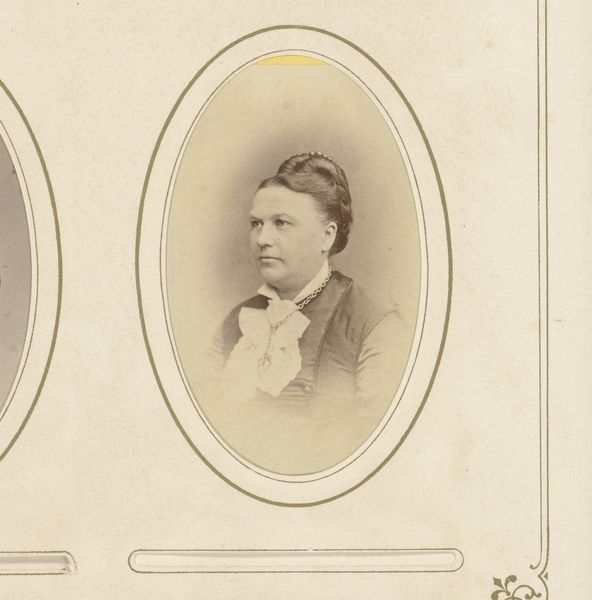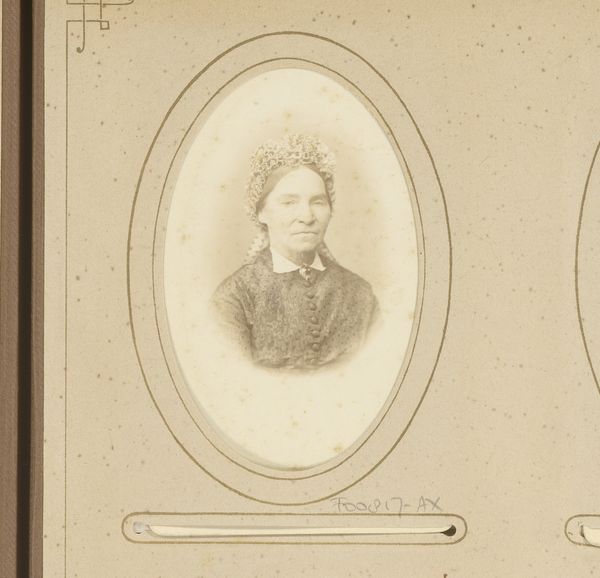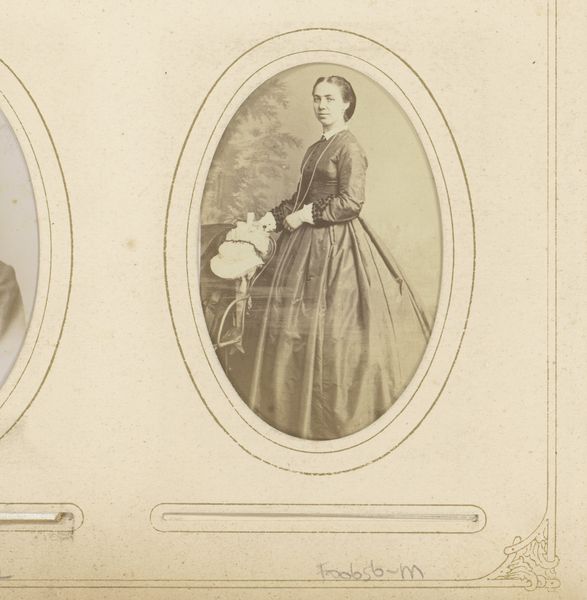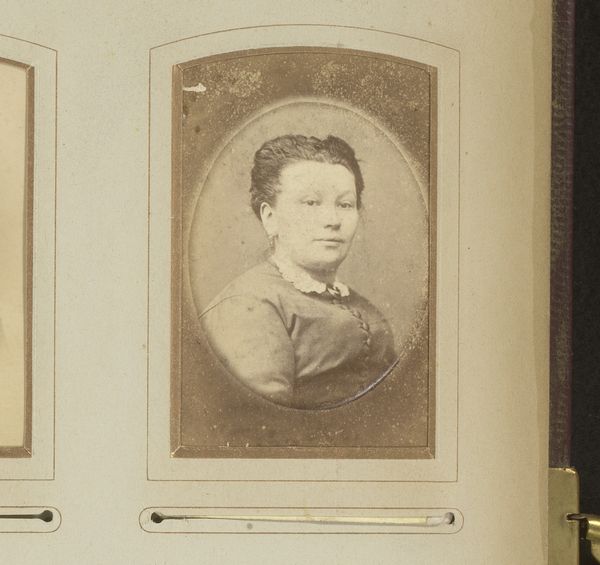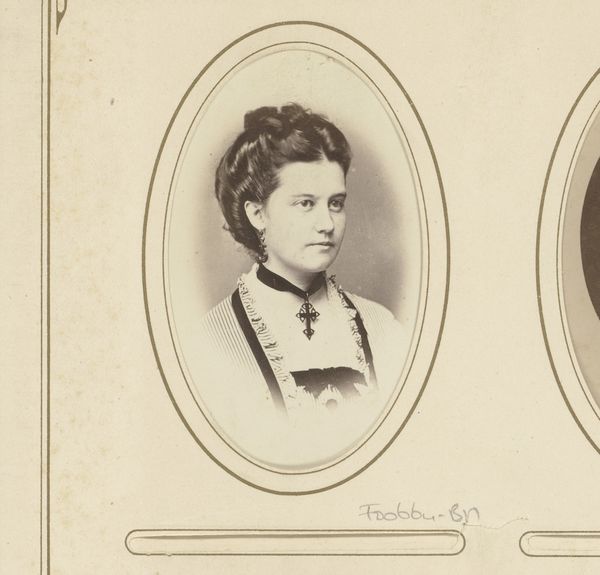
photography
#
portrait
#
aged paper
#
toned paper
#
16_19th-century
#
vintage
#
parchment
#
photography
#
historical photography
#
old-timey
#
yellow element
#
19th century
#
golden font
#
historical font
Dimensions: height 82 mm, width 50 mm
Copyright: Rijks Museum: Open Domain
Curator: Here, we see "Portret van een vrouw met muts," or "Portrait of a Woman with a Bonnet," made between 1875 and 1899, likely by the Cornand et Cie studio. Editor: What strikes me immediately is its delicate, almost ghostly quality. The toning of the paper lends a patina of age, a sense of a life lived long ago. Curator: Indeed. The sitter is framed within an oval vignette on, it appears, aged parchment, reflecting conventions of 19th-century portraiture. We need to think about how class and gender shaped portraiture at this time; whose image was considered worth preserving, and how. Photography was still gaining acceptance and wider circulation during this era. This type of formal portrait allowed a broader segment of the population access to memorializing their images. Editor: That’s a potent point about memorialization. Consider the bonnet: its delicate frills, perhaps handmade. The folds and textures hint at a certain social position, a marker of domesticity. We see the symbolic language of femininity encoded in the very details of her attire. Curator: Exactly. Her gaze, though seemingly direct, might reflect the limited agency afforded to women. We should explore the visual rhetoric deployed – how posture, dress, and even the tonal qualities serve to reinforce prevailing social norms and power dynamics of the 19th century. Editor: There’s also the way the photograph is presented within a kind of gilded, almost architectural frame. It feels as if the artist tried to connect the sitter with the divine via old, hallowed, golden script. I see not only class status but also the attempt to create continuity for the family or lineage who owned this work. Curator: I appreciate how you are weaving these layers together. We must constantly engage in intersectional thinking about how visual representations impact identity. Editor: Thinking about the layered meanings is key. This photo now feels both universal, as the human longing to be remembered and loved is everywhere; and incredibly specific, tied to time, place, and gendered positionality. Curator: These are essential considerations that will continue to shape how we approach art historical analysis, especially concerning representation.
Comments
No comments
Be the first to comment and join the conversation on the ultimate creative platform.
